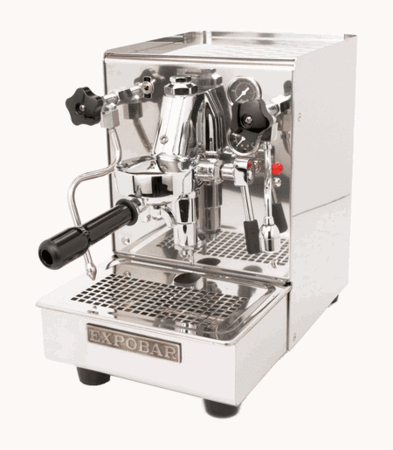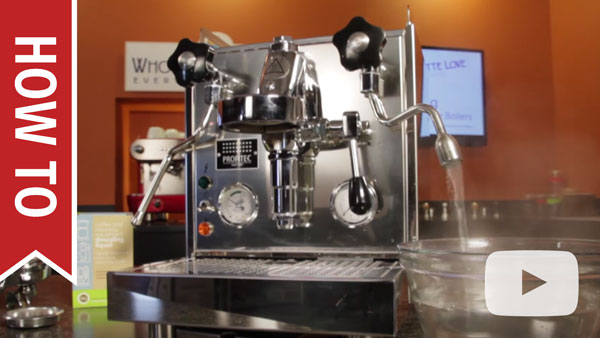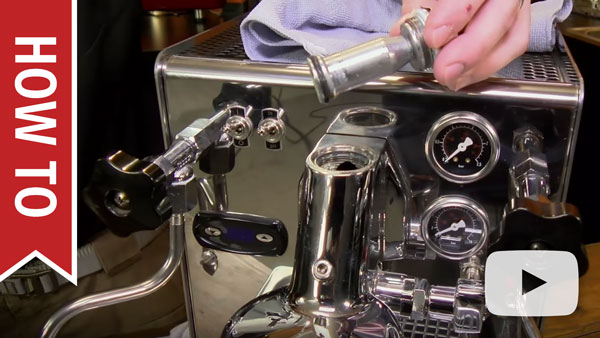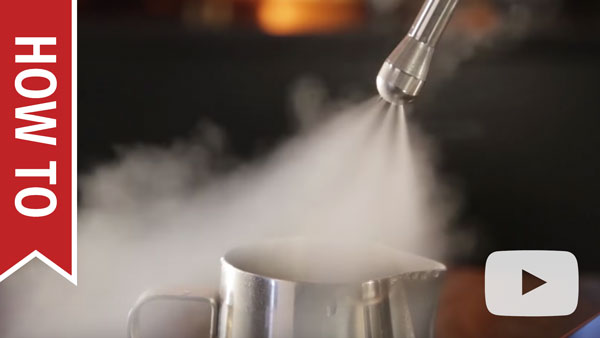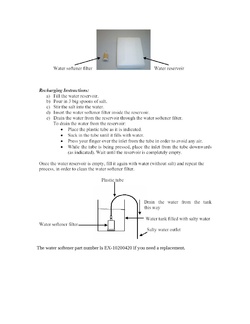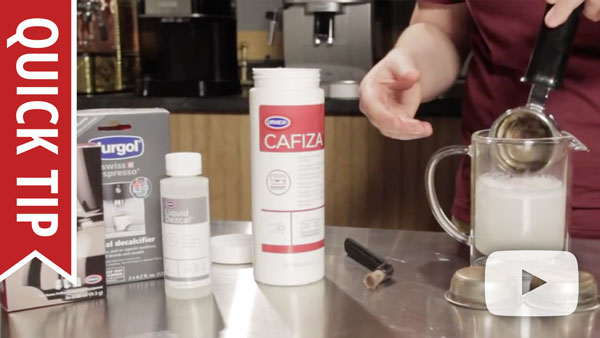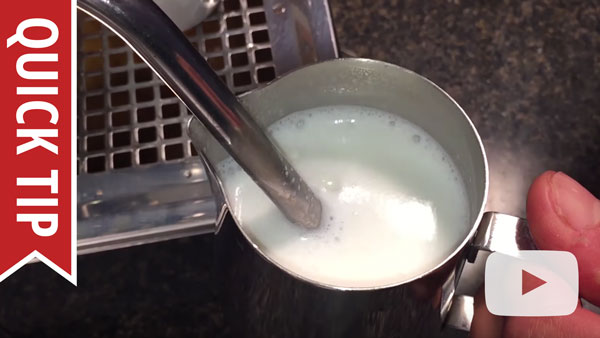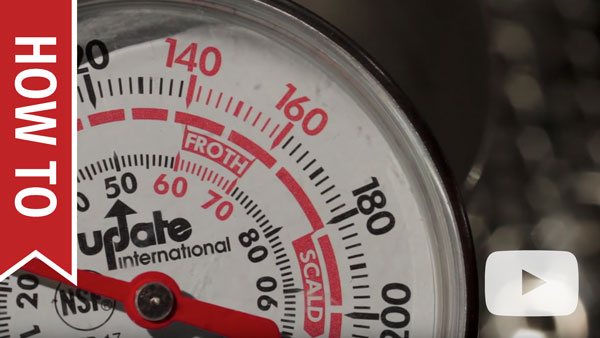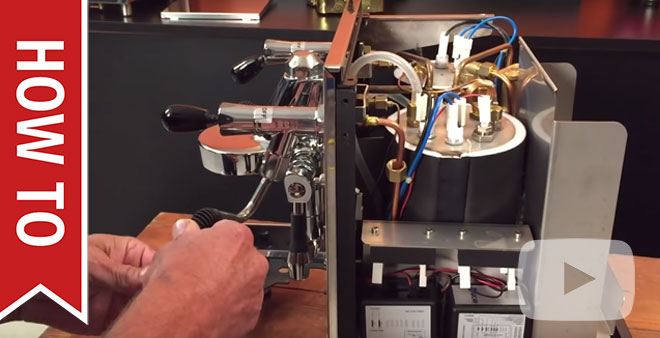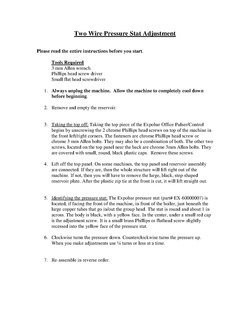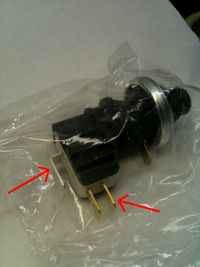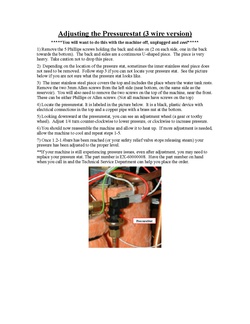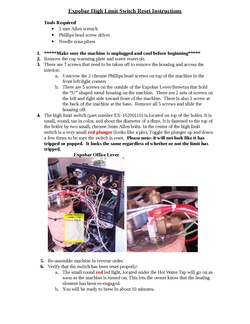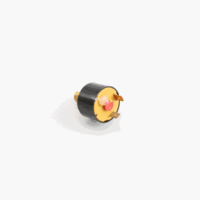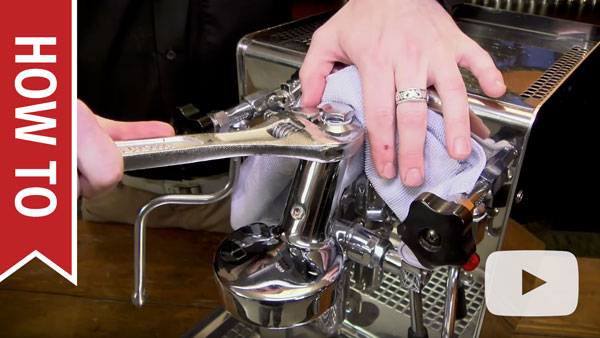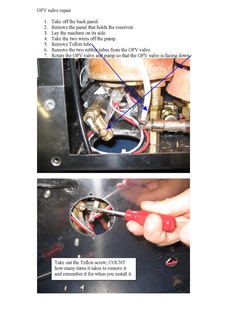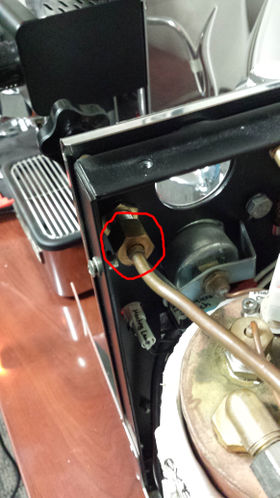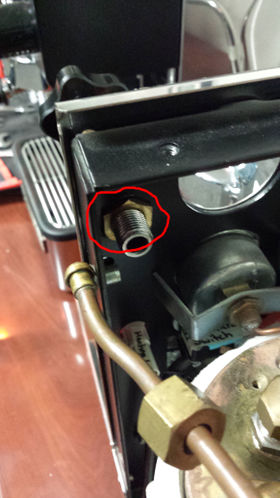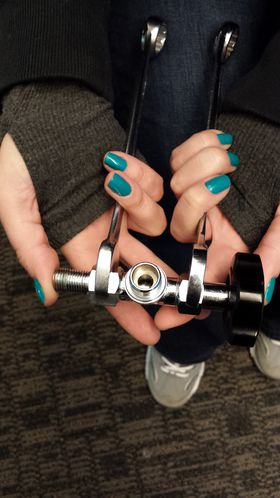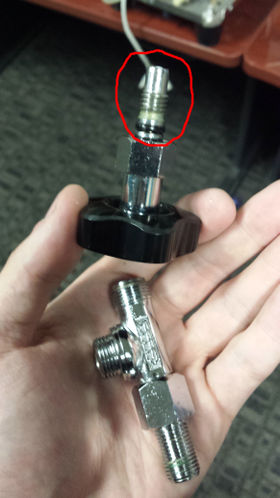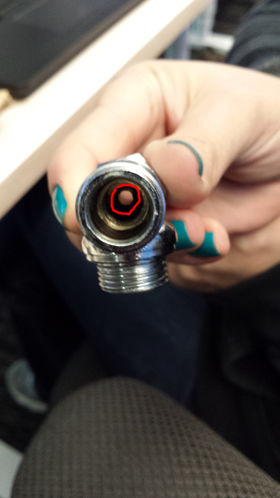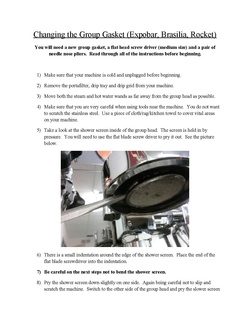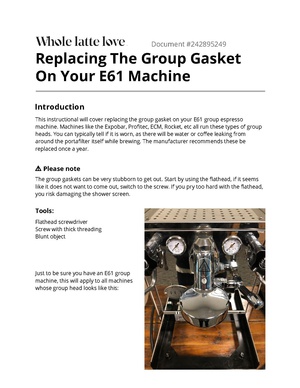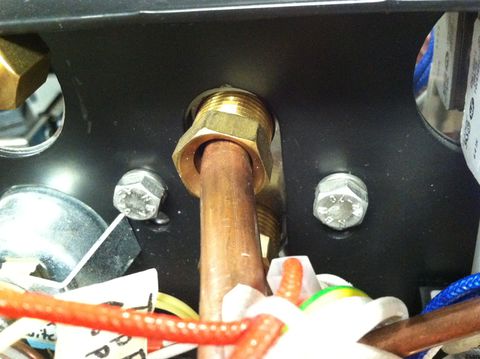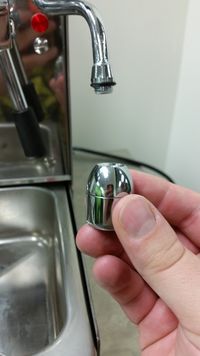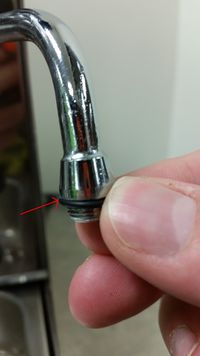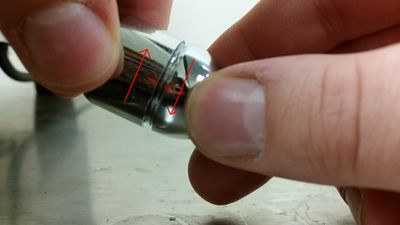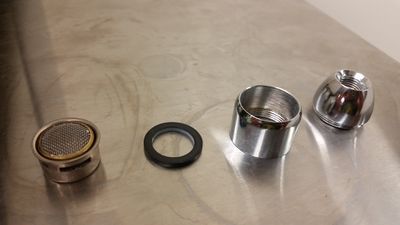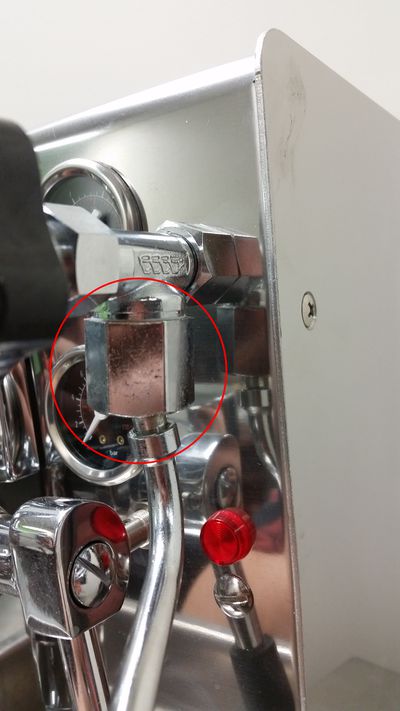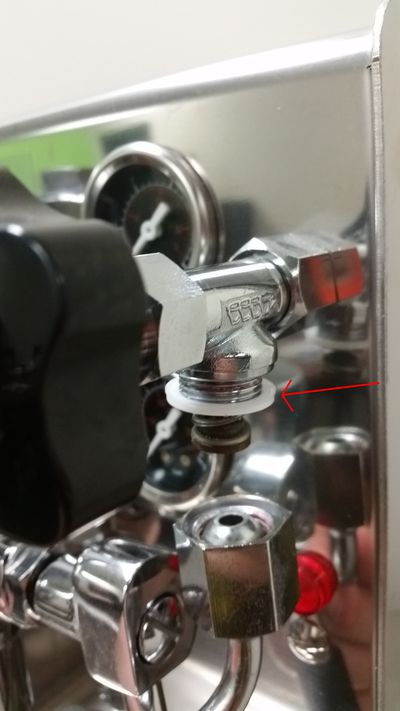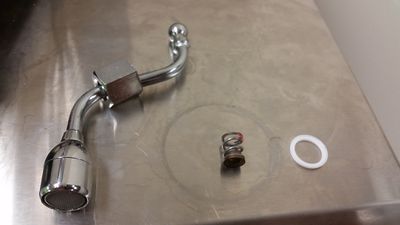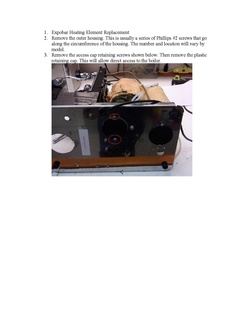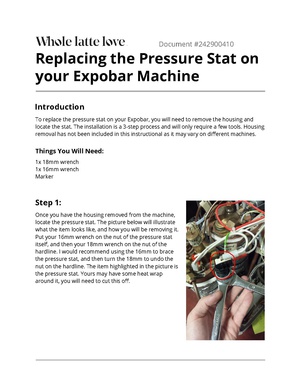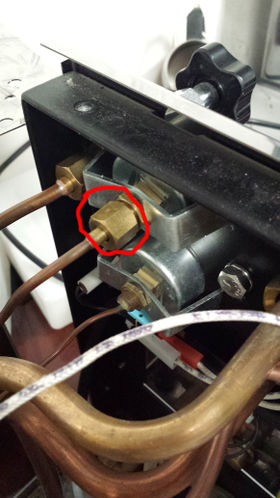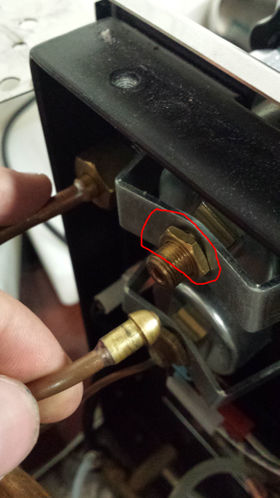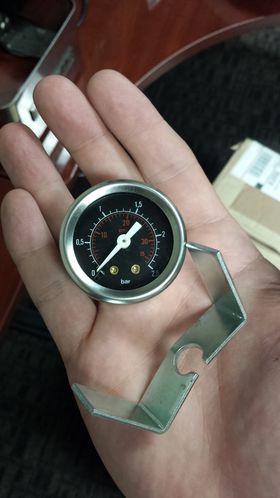Difference between revisions of "Expobar Office Lever"
From Whole Latte Love Support Library
(adding valve clean / replacement instructions) |
|||
| Line 45: | Line 45: | ||
|softener_info = This machine has a water softener cartridge available. The water softener should be replaced every 3 months. To make the water softener more effective it should be recharged on a monthly basis. The following document explains how to recharge the water softener: [[File:EXPOBAR ALL Recharging Water Softener.pdf|250px|thumbnail|center|Water Softener Recharging Instructions]] Replacement water softeners can be purchased [https://www.wholelattelove.com/expobar-water-softener-cartridge here]. | |softener_info = This machine has a water softener cartridge available. The water softener should be replaced every 3 months. To make the water softener more effective it should be recharged on a monthly basis. The following document explains how to recharge the water softener: [[File:EXPOBAR ALL Recharging Water Softener.pdf|250px|thumbnail|center|Water Softener Recharging Instructions]] Replacement water softeners can be purchased [https://www.wholelattelove.com/expobar-water-softener-cartridge here]. | ||
}} | }} | ||
| + | |||
| + | {{Maintenance-Draining-HX-Boiler}} | ||
== Troubleshooting == | == Troubleshooting == | ||
Revision as of 14:25, 19 January 2018
The Expobar Office Lever is a Prosumer espresso machine which features an E-61 style grouphead.
| Expobar Office Lever |
|---|
| Manufacturer: Expobar |
| Model Name: Office Lever |
| Type: Prosumer |
Basic Usage
Getting Started
Adjusting Brew Pressure
Draining The Boiler
Pre-Infusing
This machine utilizes the same group style as an Expobar Brewtus IV, so the same pre-infusion procedure can be applied.
Reading The Brew Gauge
The brew pressure gauge is only meaningful when the machine is actively brewing. While the machine is standing by the gauge may move around, sit at zero, or show the the circuit is pressurized; this does not mean anything. This gauge is only accurate while the brew circuit is activated during brewing. A simple test of the machine's brew pressure can be completed by using the backflush disc.
- Insert the backflush disc into the portafilter and attach it to the machine.
- Activate the brew function. The gauge will fall to zero, and then begin pressurizing.
- After about 10-15 seconds the pressure should read 8-11 Bar pressure. If your machine does this then there is nothing wrong with the brew function or brew gauge, the machine is operating to spec.
Cleaning & Maintenance
Proper machine maintenance is critical for machine function. Most machine failures are caused by lack of cleaning and many manufacturer warranties do not cover cleaning related breakdowns, so it is important to keep a regular maintenance schedule. Listed below is a suggested maintenance schedule for most Prosumer espresso machines:
Descaling
Single boiler heat exchange machines can be descaled by the consumer. Since descaling is not the primary cleaning method for prosumer style machines it does not need to be done frequently. Descaling can be done on a 3-4 month basis, or whenever the machine starts to display flow issues. If hard water is being used in the machine, or the machine gets heavy usage, the machine may need to be descaled more frequently. The video on the right describes the process for descaling a single boiler heat-exchange machine.
Grouphead Cleaning
The grouphead should be taken apart on a monthly basis to remove scale buildup, remove coffee residues, and improve shot flavor.
Steam Wand Cleaning
The steam wand should be cleaned daily once the machine is finished for the day. Milk residues quickly build up on the steam wand, so it's important to keep it clean to prevent blockages from forming.
Water Softener
This machine has a water softener cartridge available. The water softener should be replaced every 3 months. To make the water softener more effective it should be recharged on a monthly basis. The following document explains how to recharge the water softener: Replacement water softeners can be purchased here.Recommended Cleaning Products
The best product for backflushing, cleaning grouphead components, and cleaning filter baskets is a backflushing powder like Urnex Cafiza. The machine can be descaled using Urnex Full Circle Cleaning Liquid.
Draining the Boiler
Be sure to drain the boiler(s) whenever you ship or store your machine, as water can freeze and expand inside. This can lead to cracking, fracturing, or otherwise damaging the boiler unnecessarily. The video below shows you how to do this.
Troubleshooting
No Crema or Bad Tasting Shots
Typically, issues with crema or the flavor of the shot do not indicate a malfunction of the machine. Instead, this indicates that an adjustment needs to be made in the brewing process or that different beans need to be used.
The following articles review the different variables and offer solutions:
- Tamping The Correct Way and The Effects Of Tamping Pressure
- Grinding Coffee For Espresso
- It is important to use fresh beans, typically beans roasted within the past two weeks are best. Light and medium roasts are best for espresso brewing and richer crema. Storing beans properly is also important, more information can be found here.
If the behavior persists after reviewing these factors then the machine may need to be cleaned. Lack of cleaning can cause burned or bitter flavors, or create flow issues which can result in a weak shot. Navigate to the Cleaning & Maintenance icon above for more information.
Difficulty Frothing
As with brewing, technique is critical to frothing well. Frothing is very sensitive to technique, which has a steep learning curve. If the machine is producing steam then an adjustment to technique may need to be made. The video on the right shows proper frothing technique.
Many frothing mistakes are common missteps that result in poor or no froth. The video on the right identifies these mistakes and shows how to correct them.
It is also important not to overheat your milk. The milk will have the sweetest and most velvety texture between 140-150 F°. As you froth past this point the milk will lose its sweetness, the froth will take on a gummier texture, and eventually the milk will scald and begin to taste burnt. The video on the right explains how to use a frothing thermometer so that the milk is kept within the ideal range.
Flow Issues
The first place to start with any flow issue is cleaning the machine. Before going through these steps please make sure the machine is cleaned according to the Cleaning & Maintenance section of this article.
No Steam From Wand / No Hot Water From Hot Water Tap
- Check the brew function on the machine and see if water is able to flow through the machine for this function.
- If the brew water is not flowing, either refer to the No Flow At All section of this article
- If the brew water flows but is not hot, refer to the On But Not Heating section of this article.
- If there's no hot water from the hot water tap, check the steam function of the machine. If you are able to draw steam from the steam wand then the steam boiler must be pressurizing and heating.
- If there's no steam from the steam wand, check the hot water function of the machine. If you are able to draw hot water then the steam boiler must be pressurizing and heating, because hot water is expelled from the machine by steam pressure.
- Check the steam gauge of the machine. Does it show pressure? Typical range for the steam gauge should be 1-1.2 Bar.
- If the gauge is within the 1-1.2 Bar range, then the steam wand is likely blocked.
- Remove the tip from the steam wand and test the flow. If flow is restored, then the tip needs to be cleaned and reattached.
- If the flow is still blocked, then there may be a blockage in the steam wand itself. Clean the wand by using a pipe brush that has synthetic or plastic bristles; metal bristles can damage the wand. Then soak the wand in a solution of hot water and backflushing powder for ten minutes. Test flow again.
- If there still isn't flow, then there may be a blockage farther back in the steam circuit. The machine may need to be professionally cleaned to remove the blockage.
- If the gauge is not reaching 1-1.2 Bar, but it is pressurizing some, then the steam pressurestat may just need to be adjusted.
- When adjusting the pressurestat, only slight adjustments should be made. Small adjustments will make a large difference in the pressure.
- If adjusting the pressurestat the first time did not raise the pressure, try adjusting it a few more times. If the pressure is still not raising after several adjustments then the pressurestat is likely broken and will need to be replaced. There are two versions of the pressurestat for this machine. The original version is a 2-Wire pressurestat, which is available for purchase here. Some Lever machines have been updated to utilize the newer 3-Wire pressurestat, which can be purchased here. If you have the 3-wire style, or plan to convert to the three wire style the wires will need to be attached in a certain way. Below shows which terminals the wires need to attach to, as well as a pdf with 3-wire pressurestat adjustment instructions :
- If the gauge sometimes reaches 1-1.2 Bar, but flicks around a lot or randomly drops to zero, or is always sitting at zero, then the steam boiler is not building pressure for some reason.
- If the machine is spewing a lot of steam from the top as it is heating up, then the vacuum relief valve may be stuck open. This valve is supposed to close once the machine produces enough steam pressure.
Vacuum Relief Tear Down Instructions
- The high limit switch may be tripped. The high limit switch is an internal killswitch which prevents damage to the machine caused by power surges or the machine overheating. Instructions for resetting the high limit switch can be found in this document:
- While the machine is open for resetting the high limit switch, check to make sure the wiring to the pressurestat isn't loose or disconnected. Reconnect the wires and see if the steam circuit pressurizes properly.
- If there weren't any disconnected wires, then the pressurestat will need to be replaced. There are two versions of the pressurestat for this machine. The original version is a 2-Wire pressurestat, which is available for purchase here. Some Lever machines have been updated to utilize the newer 3-Wire pressurestat, which can be purchased here. If you have the 3-wire style, or plan to convert to the three wire style the wires will need to be attached in a certain way. Below shows which terminals the wires need to attach to, as well as a pdf with 3-wire pressurestat adjustment instructions :
Poor Or No Flow From Grouphead
If the steam/hot water for the machine is working fine then there is likely something causing a blockage or pressure issue in the brew circuit. Otherwise refer to the section of this article that discusses the machine not flowing at all.
- If a water softener is attached to the inlet line of the machine, it may be preventing water from flowing. Please remove the softener and see if the flow improves.
- The grouphead is dirty and needs to be cleaned.
- Taking apart the grouphead for manual cleaning is the first step. This should be done on a monthly basis. The instructions can be found here.
- If cleaning the grouphead restores flow to the grouphead, the machine should be immediately backflushed to prevent further flow issues.
Backflushing instructions can be found in the tech document from the previous step.
Maintaining Your Espresso Machine - Backflushing
- There might be a kinked, broken, or loose line somewhere in the machine. Remove the top of the machine and take a look inside to see if you see any obvious issues.
- There might be an issue with one of the internal valve assemblies, which may need to be cleaned or replaced.
No Hot Water From Tap
- Check the brew function on the machine and see if water is able to flow through the machine for this function.
- If the brew water and steam are not flowing either refer to the No Flow At All section of this article
- If the brew water flows but is not hot refer to the On But Not Heating section of this article.
- Check the steam function of the machine. If you are able to draw steam form the steam wand then the steam boiler must be pressurizing and heating.
- Check the steam gauge of the machine. Does it show pressure? Typical range for the steam gauge should be 1-1.2 Bar.
- If the gauge is within the 1-1.2 Bar range then the hot water tap is likely blocked.
- Remove the tip from the hot water tap and test the flow. If flow is restored then the tip needs to be cleaned and reattached. Mineral deposits can easily collect in the screen/holes of the hot water tap, so be sure to clean these thoroughly. Soaking the tip in a solution of hot water and backflushing powder will help remove residues more effectively.
- If the flow is still blocked then there may be a blockage in the wand of the hot water tap. Clean the wand by using a pipe brush that has synthetic or plastic bristles; metal bristles can damage the wand. Then soak the wand in a solution of hot water and backflushing powder for ten minutes. Test flow again.
- If there still isn't flow then there may be a blockage farther back in the hot water circuit. The machine may need to be professionally cleaned to remove the blockage.
- If the gauge is not reaching 1-1.2 Bar, but it is pressurizing some, then the steam pressurestat may just need to be adjusted.
- When adjusting the pressurestat only slight adjustments should be made. Small adjustments will make a large difference in the pressure. Instructions for adjusting the pressurestat can be found in the document below:
- If adjusting the pressurestat the first time did not raise the pressure try adjusting it a few more times. If the pressure is still not raising after several adjustments then the pressurestat is likely broken and will need to be replaced. There are two versions of the pressurestat for this machine. The original version is a 2-Wire pressurestat, which is available for purchase here. Some Lever machines have been updated to utilize the newer 3-Wire pressurestat, which can be purchased here. If you have the 3-wire style, or plan to convert to the three wire style the wires will need to be attached in a certain way. The picture below shows which terminals the wires need to attach to:
- If the gauge sometimes reaches 1-1.2 Bar, but flicks around a lot or randomly drops to zero, or is always sitting at zero then the steam boiler is not building pressure for some reason.
- If the machine is spewing a lot of steam from the top as it is heating up then the vacuum relief valve may be stuck open. This valve is supposed to close once the machine produces enough steam pressure. Instructions for cleaning the vacuum relief valve can be found in the video below:
- The high limit switch may be tripped. The high limit switch is an internal killswitch which prevents damage to the machine caused by power surges or the machine overheating. Instructions for resetting the high limit switch can be found in this document:
- While the machine is open for resetting the high limit switch, check to make sure the wiring to the pressurestat isn't loose or disconnected. Reconnect the wires and see if the hot water circuit pressurizes properly.
- If there weren't any disconnected wires then the pressurestat will need to be replaced. There are two versions of the pressurestat for this machine. The original version is a 2-Wire pressurestat, which is available for purchase here. Some Lever machines have been updated to utilize the newer 3-Wire pressurestat, which can be purchased here. If you have the 3-wire style, or plan to convert to the three wire style the wires will need to be attached in a certain way. The picture below shows which terminals the wires need to attach to:
- If the gauge is within the 1-1.2 Bar range then the hot water tap is likely blocked.
How to Remove, Clean and Lubricate Your Steam and Hot Water Valves
Removing, cleaning and lubricating your valves can be a quick fix for a leaky or sticky valve, and is good for keeping them up and working properly. You will be required to remove the housing from your machine. Housing removal has not been included as it can vary from machine to machine. In our instance, our wand was already removed from the valve body, yours does not need to be to go through with this process.
Things You Will Need:
- 2x 19mm wrench
- 1x food safe lubricant
- Once you have the case off of the machine, locate the backside of the valve you are looking to remove. It should look something like the picture below. You will need to start by first removing the nut from the hardline attached to the back. It has been highlighted in the picture below.
- Once you have removed the nut from the hardline, you will need to remove the secondary nut that is behind it. This actually holds the valve in place.
- Once this has been removed, the valve should be able to be taken off of the machine. To actually open the valve you will need both 19mm wrenches. One to brace the valve, and the other to actually unscrew and open it.
- You’re going to be looking to unscrew the nut on the front of the valve, right behind the knob. Once you’ve broken the nut free, you will have to unscrew the nut as far as it will go, and then start unscrewing the knob like you’re opening it. You should end up with the valve body and the knob separate as illustrated below.
- Highlighted in the picture above is the area that you can clean and apply lubrication to. You can lubricate the shaft with a food safe lubricant down to the o-rings and up to the top. Be sure not to apply lubricate to the teflon cap at the top end. The next area you want to check for any sort of build up is inside the valve body itself as shown below. You want to look down the valve and check in the middle where the o-ring is, and make sure there is no build up in there. The whole valve body itself can be soaked to help clean off any residue, and you can put a non-abrasive brush in there to help clean out any extra build up.
DISCLAIMER: Do NOT use any chemical cleaning products. This can strip the chrome plating from the valve. Soap and hot water will be sufficient for cleaning the valve.
Once you’ve sufficiently cleaned and lubricated the valve, you can reassemble to finish the process.
No Flow At All
- If the pump does not sound like it is activating:
- Check to make sure the water tank is filled, and the machine isn't indicating that the water tank is empty.
- If the tank is empty, refill it.
- If the tank is full, but the machine thinks the water tank is empty, then the tank may not be seated correctly. Make sure there isn't anything blocking the tank from sitting flush inside the machine.
- Remove the cover of the machine, and check for any loose or disconnected wires.
- Make sure there aren't any kinked or pinched hoses.
- There may be an issue with the water tank sensor. The water tank sensor may be wired incorrectly. This video below will explain how to rewire the sensor correctly:
- There may be an issue with the pump powering on. This video will explain how to test for electrical pump issues:
- Check to make sure the water tank is filled, and the machine isn't indicating that the water tank is empty.
- If the pump does sound like it is activating:
- Check the water tank to make sure it is filled and that both the inlet line and the return lines are inserted into the tank. Make sure the inlet line in particular is below the surface of the water.
- If you are using the water softener on the inlet line, try removing it and see if water can flow through the machine.
- Open up the machine. Make sure there aren't any kinked or pinched hoses anywhere.
- There may be a stuck valve inside the machine. Check to make sure the fill valve is operational. This video will explain how to see if the fill valve is activating properly:
Machine Is Leaking
Between Portafilter & Grouphead
If the machine is leaking from between the grouphead and the portafilter then the grouphead gasket is either pushed out of place and needs to be reinserted properly, or the gasket is worn out. Typically, grouphead gaskets will wear out in approximately 6 months to a year depending on how heavily the machine is used. Premature wear to this gasket can be caused by using excessive force when attaching the portafilter. It is important to distinguish where the leaking is occurring. If the leaking is originating from farther up on the grouphead assembly and then draining down to where the portafilter is attached, then refer to the section of this article which discusses leaking from the grouphead.
If the leaking is coming from between the portafilter and grouphead where you twist the handle on, then the gasket will need to be replaced. Instructions for changing the gasket can be found here: A replacement group gasket can be purchased here. You can try using the instructions to clean and reseat the current gasket. If that does not resolve the leak then the gasket will need to be replaced.The gasket can get stuck in the grouphead from wear or excessive heat exposure. To remove the gasket take some self-tapping screws and partially screw them into the group gasket. Make sure not to go all the way through the gasket because you can scratch/dent the grouphead if you go too far. Then use a pair of pliers to pull on the screws and the gasket will pull out with them.
From The Grouphead
This section addresses leaking which is coming directly from the grouphead, known as the E-61 style. If the machine is experiencing leaking between the grouphead and the portafilter refer to the section of this article which discusses grouphead gasket issues.
- There are multiple valves and o-rings which are part of the E-61 itself. Depending on where the leak is coming from, it may indicate an issue with one or more of these assemblies.
- If the leaking is coming from the lever arm of the machine, then there is an o-ring that is loose, dirty, or worn out. A blowout of the lever assembly can be seen on p.13 of the machine's parts diagram. The o-rings that will need to be checked are listed as part 9 and part 8 on this page.
- To access these o-rings remove the end cap of the lever assembly using a flathead screwdriver.
- Once this is removed the other components of the grouphead assembly can begin to be slipped off. The bolts that the lever slides into can be removed with open ended wrenches or an adjustable wrench.
- Inspect the o-rings and make sure they are not damaged. It's possible that they are just dirty and need to be cleaned off and reseated. If they are damaged, broken, or shows signs of chaffing then they will need to be replaced.
- Inspect the valve components well to make sure they are intact.
- Reassemble the components and see if leaking is resolved.
- If the leak is coming from the top bolt assembly, then there is an o-ring that is loose, dirty, or worn out. A blowout of the top valve assembly, known as the mushroom or trumpet valve, can be found on p.13 of the machine's parts diagram. There are a few components which can be contributing to the leaking. There are two o-rings, listed as parts 1 and 4 on this page of the diagram. There is also a valve assembly shown as assembly 6 on the same page.
- To access these parts use an open ended wrench or adjustable wrench to remove the smaller top bolt of the E-61. This will give you access to the first o-ring and spring assembly.
- To access further down into this part of the grouphead use a wrench to remove the large bolt. This will let you access the other o-ring, another spring assembly, and the other valve assembly.
- Inspect all of these components for integrity. Clean any dirty parts and replace any broken parts.
- Reassemble the grouphead and see if the leaking is resolved.
- If the leak is coming from the relief valve on the bottom of the E-61, then there may be an o-ring that is loose/dirty or a valve inside the E-61 that is stuck open. A blowout of the bottom valve assembly, known as the release valve, can be found on p.13 of the machine's parts diagram. There are two o-rings in this assembly, listed as parts 4 and 14 on the diagram, and two valve assemblies, listed as assemblies 10 and 12 on the diagram, that can be causing the leak.
- To access these parts use an open ended wrench or adjustable wrench to remove the smaller bottom bolt. You will be able to access part 14, the o-ring, and assembly 12, one of the valve assemblies. Inspect the parts. If they are dirty clean them off, if they are broken replace them.
- To access the next o-ring and valve assembly use a wrench to remove the larger of the bolts. Again, inspect the parts for cleanliness and damage. Clean or replace as needed.
- Reassemble the release valve and test to see if the leaking is resolved.
- If cleaning and repairing a particular valve assembly has not worked, then it may be prudent to do a complete cleaning of the E-61 grouphead assembly. Instructions for cleaning the entire E-61 can be found by clicking here.
- If the machine is leaking between the grouphead and the faceplate of the machine where the grouphead attaches, then there may be a bad gasket or loose bolts. There are two possible reasons for the machine to be leaking from here.
- The first is that one of the plumb lines connected to the back of the E-61 is not secure resulting in a leak. This will need to be tightened from the inside of the machine. You may see leaking from the bottom of the machine as well if this is the case. Remove the top of the machine and look towards the front of the machine. These lines will be located on the back of the faceplate, opposite to where the grouphead is seated. They are listed as parts 19 and 11 on p.9 of the machine's parts diagram. Use an open ended wrench or adjustable wrench to tighten these down. If the leaking persists you may need to apply white teflon plumbers tape or a sealing compound such as food safe permabond.
- The other possibility is that the E-61 group chassis gasket is not sealing tightly, or is worn out or damaged and will need to be replaced. The chassis gasket is listed as part 20 on p.13 of the parts diagram. There are two bolts which secure the E-61 to the machine chassis, causing it to press on the gasket and create a seal. First try tightening these two bolts down. If tightening these bolts does not resolve the leak, then the chassis gasket will need to be replaced.
From Bottom Of Machine
- Check the water tank and drip tray to make sure there are no cracks or breaks where water can escape. Make sure they are properly positioned on the machine.
- The machine should have both an inlet line and a return line. Make sure the return line is inside of the water tank. If you do not see the return line it may have fallen inside of the machine and will need to be retrieved and put back into the water tank.
- Open the machine and check all of the connections to make sure they are securely attached.
- Examine the pump and boiler assemblies to see if there are any cracks in them. If the machine was exposed to subfreezing conditions without being properly drained it can cause these components to crack. These parts will need to be replaced if they are cracked.
- Make sure both the inlet line and the outlet line on the pump are securely connected.
- Check the various valves located on top of the boiler assembly.
- If water is leaking from the relief valves, then the boiler may be overfilling. Distilled, reverse osmosis, and zero water are not compatible with this style of machine as the water level probe depends on minerals in the water to detect its presence. These water types do not contain minerals, and so the machine will continuously fill until it overflows, usually resulting in water leaking from the relief valves.
- If water is leaking from the relief valves even though you are using a water that contains minerals, then you may need to clean the water level probe.
- If the machine is plumbed, then there may be too much pressure at the inlet line. The pressure restrictor may need to be adjusted, or if you do not have a pressure restrictor installed you may need to install one.
- If the valves are leaking directly from where they screw into the boiler, then they may have a broken seal. Try resealing the valves by using white teflon plumbers tape or food safe permabond and screwing them back into the boiler.
- If there are any broken or cracked hoses, or hoses with pinhole leaks, they will need to be replaced.
- If you cannot find the source of the leak, it's possible the water you are seeing is from water spilled when refilling the machine, or from the drip tray being out of position. It is also possible to run the unit with the casing off to help identify the source of the leak; precautions should be taken to protect yourself from any exposed wiring or hot water or steam that comes from the machine if you attempt this.
Steam From Top Of Machine
If there is steam coming from the top of the machine then one of the relief valves is venting steam.
- If the steam is leaking from the machine while it is heating up, with more and more steam coming from the top as the machine heats more, then the steam is coming from the vacuum relief valve.
- The vacuum relief valve is meant to vent steam until a certain amount of pressure has built up in the boiler. It is normal for this valve to vent steam as the machine is heating. Once enough steam pressure is built up in the boiler the valve will pop closed.
- If the machine is fully heated and the vacuum relief valve is still not closing then it may need to be cleaned.
- If cleaning the vacuum relief valve has not resolved the issue, then the vacuum relief valve may be broken and will need to be replaced. A replacement vacuum relief can be purchased here
- If the steam is leaking from the machine after it is fully heated, then the pressure relief valve may be relieving excess steam pressure.
- The pressurestat may need to be lowered. The pressurestat should not read any higher than 1.2 bar.
- If the pressure exceeds this level, the relief valve may open. The pressurestat should be lowered.
- If the pressure is down to 1 bar or less and the relief valve is still open, then it may be stuck open. The pressure relief valve is listed as part 6 on p.11 of the machine's parts diagram. Make sure the machine is turned off and cooled down. Then use an open ended wrench or adjustable wrench to unscrew this part from the boiler. Soak the valve in a solution of hot water and backflushing powder, and use a grouphead cleaning brush to remove any major scale deposits on the part.
From Steam Wand Or Hot Water Tap
- If either wand is leaking from the end of the wand, it means the steam/hot water valve is not fully closed.
- Make sure the knob is securely in the closed position.
- If the knob feels loose, or doesn't appear to be properly engaging, then there may be a loose or broken part in the knob assembly. The knob assembly is simple to take apart. A blowout of this assembly can be seen on p.15 of the machine's parts diagram.
- Simply use a screwdriver to remove the screw on the knob assembly.
- Once this screw is removed then the knob will come off. Pull forward on the knob and it will slide off the steam valve cam shaft.
- Inspect both the screw and the knob to make sure they are not damaged or stripped. The knob should have a square shaped hole that matches the shape of the cam shaft. If this hole gets misshapen from over-tightening the steam or hot water knobs, it will spin on the shaft instead of closing it.
- While these parts are removed test to see if you can stop the leaking by manually tightening the cam shaft. A pair of pliers are adjustable wrench will provide sufficient grip to turn the shaft manually.
- Descale the machine according to the instructions in the Cleaning & Maintenance section above. Scale buildup inside of the steam/hot water valves will prevent the valves from closing fully.
- If the leaking persists, then the corresponding valve may need to be replaced.
- If the wand is leaking between the tip and the arm of the wand during use, there is an o-ring that is broken, missing, or out of position.
- The steam tip o-ring is easy to access. Simply remove the steam tip and there will be a small o-ring between the tip the wand arm. Inspect this o-ring for damage and clean it.
- The hot water tip is a little more complicated, but still easily accessed and cleaned.
- First unscrew the entire tip assembly from the wand arm.
- There will be an o-ring between the tip assembly and the wand arm. If the leaking was coming from here, then this o-ring needs to be cleaned and repositioned, or if it is damaged it will need to be replaced.
- If the leaking was coming from farther down on the tip, then the tip will need to be disassembled further to troubleshoot. To disassemble the tip further simply twist the two halves of the tip assembly in opposite directions.
- Once the tip is apart it will separate into four separate pieces. There will be three metal pieces and another o-ring. Inspect the o-ring for cleanliness and damage. The metal pieces can be soaked in a solution of hot water and backflushing powder to remove and scale buildup on them.
- If the wand is leaking from the ball joint, then there may an o-ring that is worn out or out of position.
- These instructions apply to both the steam and hot water wands. First remove the wand arm. This can be done by unscrewing the hex shaped bolt at the top of the arm.
- Once the wand is removed you may have parts stick to the valve assembly. Do not lose these parts.
- The inspect the o-ring and the tension spring to make sure they are in good condition. The spring should be really firm. If it is easily compressed then it may need to be replaced. Make sure these parts are clean and reinstall them. When installing the o-ring, there will be a side that is flatter. Make sure this is facing upwards when you reassemble the parts.
Machine Not Heating Or Powering On
No Power
- Make sure the machine is plugged into an appropriate power source.
- Do not use the machine on a surge protector. This machine has a high power draw, more than a typical kitchen appliance such as a refrigerator or a microwave. Surge protectors are typically not rated to handle the amperage this machine requires.
- Try using the machine on a different outlet, and make sure the machine is the only appliance plugged into that outlet.
- Make sure the power switches are functioning properly and not broken. If the machine isn't powering on try pressing and holding the power button in the on position to see if the machine turns on. If you are able to power the machine on this way then the power switch needs to be replaced.
- If the machine recently had a leak, had water spilled on it, or any other exposure to moisture then the machine may be shorting out. Try letting the machine sit unplugged for 48 hours to make sure there isn't a short caused by moisture.
- The video below also systematically goes through the electronic systems on an Expobar unit. It may help you identify the cause of the issue.
Brew Not Heating
- Give the machine sufficient time to heat up. A heating time of 20-30 minutes is recommended for prosumer style machines for it to be sufficiently heated for brewing. Make sure the portafilter is attached during heating.
- Make sure the heating indicator is on. If the heating indicator is not on, then the machine will not heat. Typically this light will be off if the machine is out of water or not able to fill the boiler.
- The pressurestat may be set too low resulting in a lower temperature. Be cautious when adjusting the pressurestat. Setting it too high can cause the machine to overheat, resulting in the pressure relief valve blowing off excess steam. Instructions for adjusting the pressurestat can be found in the document below:
- The high limit switch may be tripped and needs to be reset. Instructions for resetting the high limit switch can be found in the video below:
- The heating element may be broken and may require replacement. Instructions for testing the heating element can be found in the video below:
- It is highly suggested that if the machine has a bad heating element that the machine be sent in for repair. Replacement of this element is complex, and can cause damage to the machine if not done properly. We suggest reviewing the instructions below before purchasing an element. If you are not comfortable with any part of the instructions you should not attempt the replacement.
Steam Not Heating
- If the machine is producing steam, but you think it's not producing enough steam, make sure that you are purging the line before frothing. To purge the line simply open the steam knob and let steam come through until it changes from mostly water to mostly steam. When steam leaves the boiler and hits the cold wand it is going to condense back into water. If you do not purge the line it will affect the way the steam wand froths.
- Make sure the steam boiler is turned on for the machine. Most prosumer units feature a switch, button, or PID menu option to turn the steam boiler off.
- Give the machine sufficient time to heat up. A heating time of 20-30 minutes is recommended for prosumer style machines for it to be sufficiently heated for brewing. Make sure the portafilter is attached during heating.
- Make sure the heating indicator is on. If the heating indicator is not on, then the machine will not heat. Typically this light will be off if the machine is out of water or not able to fill the boiler.
- The pressurestat may be set too low resulting in a lower brew temperature. Be cautious when adjusting the pressurestat. Setting it too high can cause the machine to overheat, resulting in the pressure relief valve blowing off excess steam. Instructions for adjusting the pressurestat can be found in the document below:
- The high limit switch may be tripped and needs to be reset. Instructions for resetting the high limit switch can be found in the video below:
- The heating element may be broken and may require replacement. Instructions for testing the heating element can be found in the video below:
- It is highly suggested that if the machine has a bad heating element that the machine be sent in for repair. Replacement of this element is complex, and can cause damage to the machine if not done properly. We suggest reviewing the instructions below before purchasing an element. If you are not comfortable with any part of the instructions you should not attempt the replacement.
On But Not Heating
- There is a loose, disconnected, or broken wire inside the machine. Remove the top of the machine and inspect the wiring.
- The high limit switch of the machine may have tripped. Instructions for resetting the high limit switch can be found in the video below:
- The outlet the machine is plugged into is not rated to handle the power draw of the machine.
Replacing the Pressurestat on your Expobar
To replace the pressurestat on your Expobar, you will need to remove the housing and locate the stat. The installation is quite simple and will only require a few tools. Housing removal has not been included in this instructional as it may vary from machine to machine.
Portafilter Handle Not Fitting On Machine
- On all new machines, the portafilter may or may not fit perpendicular to the machine. This is perfectly normal. This is because the grouphead gasket requires time to wear in before this can happen. As long as you can get the portafilter hand tight onto the machine and brew without leaking, then the machine is operating properly.
- Too much coffee may be dosed into the portafilter. If there is too much coffee in the portafilter, it can press into the shower screen and prevent the portafilter tightening all the way. Reduce the amount of coffee in the portafilter and try again. If you see an indentation from the shower screen in the grounds, then you’ve added too much.
- Check the filter baskets for dings, dents, or any sort of warping. A filter basket that is malformed can prevent the filter basket from sealing up against the group gasket.
- The group gasket has slipped out of place or needs replacing. Please refer to the section of this article which discusses gasket issues for instructions on how to test the gasket or replace it.
Replacing Gauges On Your Expobar
Replacing gauges on the various Expobar machines is a fairly straight forward process. You will need to remove the outer housing from your machine. This may vary from machine to machine so they have not been included in this write up. Once you have your housing removed, follow the steps below to move forward with replacing the gauge.
Things you will need:
- 1x 15mm wrench
- Locate the gauge you want to remove, and start by untightening the nut located on the back, connected to the hardline.
- Once that nut has been loosened and moved back, you will need to undo the smaller nut in front of that.
- Once the secondary nut has been removed, the brace and the gauge should free for removal.
- Once you’ve got your gauge and brace off, replace the item with your new one and reassemble.
Diagrams & Manuals
| Expobar Office Lever | |
|---|---|
| Electrical Diagram: | Not Available |
| Hydraulic Diagram: | 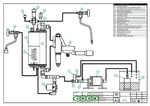
|
| Machine Manual: | 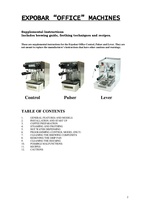
|
| Parts Diagram: | 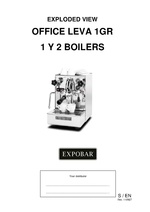
|
| Service Manual | Not Available |
| Startup Guide: | Not Available |
Specifications
| Basic Specs | |
|---|---|
| Width: | 10.5 in. |
| Height: | 15 in. |
| Depth: | 17.5 in. |
| Weight: | 54 lbs. |
| Wattage: | 1428 |
| Voltage: | 120 |
| Housing | |
| Housing Materials: | Stainless Steel |
| Drip Tray Material: | Stainless Steel |
| Drip Tray Cover Material: | Stainless Steel |
| Drip Tray Capacity: | 20 oz. |
| Power Cord Length: | 40 in. |
| Cup Height | |
| Max Cup Height: | 3.5 in. |
| Frothing | |
| Material: | Stainless Steel |
| Steam Wand Style: | Commercial Style |
| Wand Movement: | Articulating |
| Usable Length: | 7.75 in. |
| Height Off Counter: | 4-6.5 in. |
| Number Of Holes: | 1 |
| No Burn Wand: | Yes |
| Optional Steam Tips Or Wands: | Yes |
| Water Source | |
| Reservoir Or Plumbed: | Reservoir |
| Reservoir Capacity: | 93 oz. |
| Reservoir Material: | Plastic |
| Reservoir Removable: | Yes |
| Controls | |
| Type Of Controls: | Lever |
| Display Type: | LED |
| Pre-infusion: | Yes |
| Low Water Warning: | Yes |
| Pressure Gauges: | Steam |
| Cup Warmer | |
| Material: | Stainless Steel |
| Size: | 10 in. x 10 in. |
| Passive / Active: | Passive |
| Portafilter Data | |
| Material: | Chrome Plated Brass |
| Type: | Commercial Style |
| Quantity Included: | 1 |
| Weight: | 1 lbs |
| Diameter: | 58 mm. |
| Commercial Filter Baskets Included: | Sinlge & Double |
| Ground, E.S.E. Pod And Capsule Compatible: | Pod Kit Available |
| Bottomless Portafilter Available: | Yes |
| Tamper Size: | 58 mm. |
| Brew Group | |
| Material: | Chrome Plated Brass |
| Type: | E-61 |
| Preheat: | Yes |
| Three-Way Valve: | Manual |
| Capsule/Pod Friendly: | Pod Kit Available |
| Back Flush Capable: | Yes |
| Boiler Data | |
| Number Of Boilers: | 1 |
| Brew & Steam Simultaneously: | Yes |
| Brew Boiler Data | |
| Boiler Type: | Heat Exchanger |
| Boiler Wattage: | 1250 |
| Boiler Voulme: | 1.7 Liter |
| Boiler Material: | Copper |
| Boiler Orientation: | Vertical |
| Element Location: | Internal |
| Brew Boiler Auto Fill: | Yes |
| Insulated: | Yes |
| Steam Boiler Data | |
| Boiler Type: | One Boiler For Steam/Brew |
| Pump Data | |
| Pump Type: | Vibration |
| Wattage: | 41 |
| Max Pressure: | 15 Bar |
| Brew Pressure Adjustability: | Yes |
| Air Remover: | Yes |
| Self Priming: | 8 to 9 bar |
| Performance | |
| Initial Heat Up: | 420 s. |
| Recommended Heat Up: | 900 s. |
| Time To Steam (8 oz.): | 9 s. |
| Hot Water Temp (8 oz.): | 195 F° |
| Hot Water Time (8 oz.): | 13 s. |
| Sound Level Brewing: | 60 Db |
| Details | |
| Country Of Manufacture: | Spain |
| Recommended Application: | Home/Commercial |
